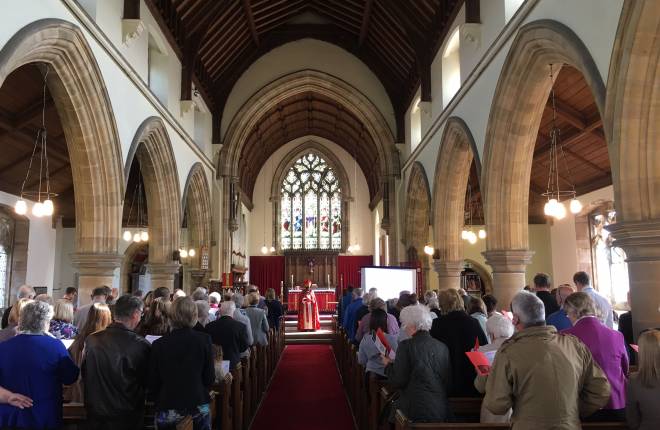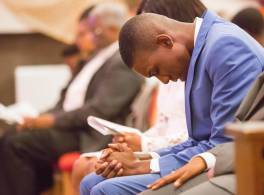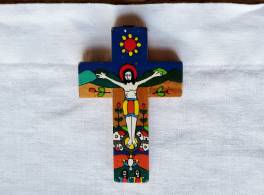Most Christians know the prayer by heart in their own language, and it is used today by every Christian tradition, though there are sometimes minor variations in the wording. It has a place in every Anglican act of worship, and forms a pattern for prayer for Christians:
- We bless God and pray for our world, our communities and our lives to be shaped by God’s will;
- We pray for daily needs to be met,
- For forgiveness for wrongdoings, strength to resist temptation and protection from danger.
There are two versions commonly used in the Church of England – in Contemporary and Traditional Language:
Contemporary
Our Father in heaven,
hallowed be your name,
your kingdom come,
your will be done,
on earth as in heaven.
Give us today our daily bread.
Forgive us our sins
as we forgive those who sin against us.
Lead us not into temptation
but deliver us from evil.
For the kingdom, the power,
and the glory are yours
now and for ever.
Amen.
Traditional
Our Father, who art in heaven,
hallowed be thy name;
thy kingdom come;
thy will be done;
on earth as it is in heaven.
Give us this day our daily bread.
And forgive us our trespasses,
as we forgive those who trespass against us.
And lead us not into temptation;
but deliver us from evil.
For thine is the kingdom,
the power and the glory,
for ever and ever.
Amen.
Origins
The text is found in two slightly different versions in the New Testament – Matthew 6.9–13 and Luke 11.1–4
The prayer as we use it today is a version that was adapted by the early Christian communities from the two Gospel texts, and it was taught in this form to new converts.
The final sentence, giving glory to God, is called the doxology. It is not part of the New Testament text, but was added very early on. The Lord’s Prayer is occasionally said without it.
God is approachable. Prayer is something anyone can do. You don’t have to use complicated words or flowery language. God isn’t swayed by arguments or by length or by skill in prayer.
At the heart of our prayers will be words that Jesus himself taught us. It is simple enough to be memorised by small children and yet profound enough to sustain a whole lifetime of prayer.
The Archbishops of Canterbury and York
- Gospel
-
a) The good news of Jesus Christ; b) the records of Jesus's life and ministry in the first four books of the New Testament (Matthew, Mark, Luke and John); c) a reading from one of these four books.
- Doxology
-
The ending of a traditional hymn or prayer, giving or offering glory to God, normally as Father, Son and Holy Spirit.
- New Testament
-
The second part of the Bible which records Jesus' life, death and resurrection and the story of the early Church.



